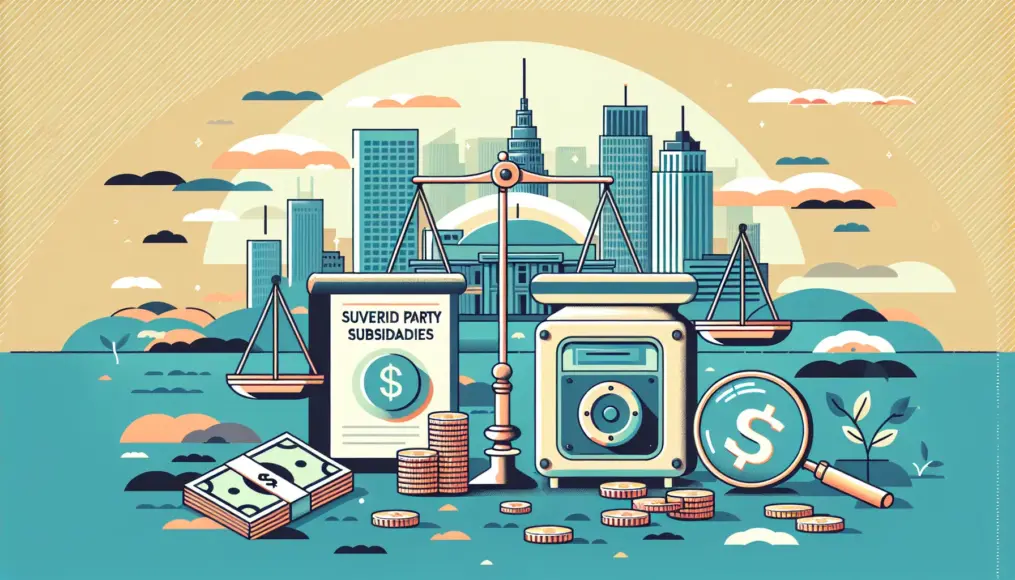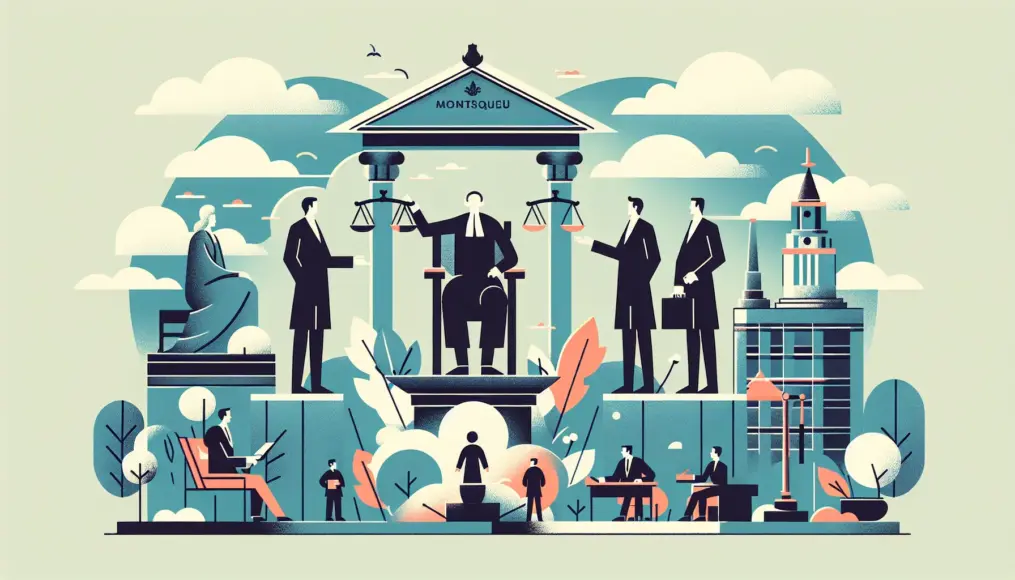Political party subsidies play a crucial role in supporting political activities, but they also come with a variety of concerns. Are these subsidies truly beneficial for the public? It’s essential to examine how these funds are utilized, their impact, and the issues surrounding transparency and fairness.
This article delves into the background and objectives of the political party subsidy system, providing a thorough analysis of its effects, realities, and the problems that have been raised. Whether you’re interested in politics or reforming the system, this is a must-read.
We’ll also discuss potential improvements aimed at shaping the future of political party subsidies. Why not take this opportunity to engage in the conversation about enhancing transparency in politics?
- Understanding the objectives and background of the political party subsidy system
- Evaluating the effects of subsidies and their impact on citizens
- Analyzing issues related to transparency and misuse
What Are Political Party Subsidies? Understanding the Background of the System
Political party subsidies are funds provided by the government to parties engaged in political activities. This system aims to enhance the transparency and integrity of politics, particularly by helping parties secure the necessary funding for election campaigns and the implementation of policies. However, various issues have been raised regarding the subsidy system, leading to ongoing debates about its management and transparency.
In this section, we will take a closer look at the objectives of the political party subsidy system and how past changes to the system have influenced its current state. Understanding the background of this system will help deepen our insight into the current political landscape and the associated challenges regarding subsidies.
Objectives of the Subsidy System
The primary objective of the political party subsidy system is to ensure fairness in political activities. Specifically, it aims to prevent only financially strong parties from gaining an advantage and to create a political environment where diverse opinions can be represented. This is expected to make it easier for citizens to have their views and demands reflected in politics.
Additionally, subsidies play a crucial role in enhancing the transparency of political parties. When public funds are allocated, parties are held accountable for how they use those resources. In this way, the subsidy system is expected to contribute to the soundness of political processes.
- The main goal of political party subsidies is to ensure fairness
- Aiming for a political environment not influenced by financial power
- Promoting accountability through increased transparency
Past Changes to the System and Their Impact
The political party subsidy system has undergone several significant changes over the years. For instance, revisions have been made to the criteria and amounts of subsidies, allowing more parties to receive funding. This was expected to support the emergence of new parties and encourage political diversity.
However, on the flip side, there have been instances where changes to the system have led to a lack of transparency in the management of subsidies. Notably, cases of improper use of subsidies have been reported, undermining public trust in the system. As improvements to the system become increasingly urgent, the challenge moving forward will be to ensure transparency while providing fair distribution of funds.
- Past changes to the system have contributed to supporting new parties
- Improper use of subsidies as a factor undermining trust
- Challenges of ensuring transparency and fair distribution
The Impact of Political Party Subsidies and Their Evaluation
Since the introduction of the political party subsidy system, its effects on various political activities have been assessed in different ways. Understanding how these subsidies are actually utilized and the impact they have on citizens’ lives is a crucial step toward improving the system. In this article, we will delve into the realities of subsidy use and its implications for the public.
This section will clarify how political parties utilize subsidies and how these funds are returned to the citizens. We will evaluate whether the subsidies are functioning as intended or if there are issues that need to be addressed, from various perspectives.
Realities of Subsidy Utilization
Political party subsidies are used for a wide range of purposes, including election campaigns, policy promotion, and member development. Many parties allocate these funds to their electoral efforts in hopes of gaining more support. However, the way subsidies are utilized varies significantly among parties, and there is an increasing demand for transparency in their use.
Another important point is how closely these subsidies are linked to actual activities and what kind of information is provided to the public. This will help determine whether the subsidies are fulfilling their intended purpose.
- Subsidies used for election campaigns and policy promotion
- Variability in usage among different parties
- Growing demand for transparency
Impact on Citizens
The impact of political party subsidies on citizens is multifaceted. When subsidies are used appropriately, they can invigorate political activities and reflect a broader range of opinions. However, concerns over misuse and lack of transparency can erode public trust in politics.
For citizens, knowing how political parties are utilizing these subsidies is crucial for encouraging political participation. When transparency is maintained and subsidies are used effectively, citizens can feel more secure in engaging with the political process.
If you are interested in this topic, be sure to check out the article “Unpacking the Political Issues Behind the Cherry Blossom Viewing Party.” This piece analyzes significant political issues related to political party subsidies and explores why these matters are important for citizens. It will serve as a valuable resource for further understanding the impact of political activities on public life.
- Proper use of subsidies contributes to political vitality
- Misuse poses a risk to public trust
- Transparency is vital for encouraging citizen participation
Issues and Criticisms Surrounding Political Party Subsidies
The political party subsidy system aims to enhance the transparency and fairness of political activities. However, various issues have surfaced that challenge its effectiveness. Many have raised concerns about the transparency and fairness of these subsidies, which contribute to a decline in public trust in the system. In this section, we will take a closer look at the major problems and criticisms associated with political party subsidies.
For political activities to function healthily, it’s crucial for the public to understand how the subsidy system operates. Without transparency, the risk of misuse of subsidies increases significantly. We will delve into the issues of transparency and fairness, as well as specific cases of misuse.
Issues of Transparency and Fairness
Critics have pointed out the lack of transparency and fairness in the distribution and use of political party subsidies. While many parties receive these funds, there are numerous instances where the details of how they are utilized remain unclear. This ambiguity makes it difficult for the public to grasp how the subsidies are being spent.
Additionally, there are claims that the distribution of subsidies is not equitable. When funding is skewed toward specific parties, it can foster political inequality. If these issues are not addressed, public trust in the system will deteriorate, potentially dampening citizens’ willingness to participate in the political process.
- Lack of clarity in the use of subsidies
- Public perception of transparency is lacking
- Biased funding undermines fairness
Cases of Misuse
There have been several reported instances of misuse related to political party subsidies. For example, some parties have diverted funds for illegitimate purposes or claimed subsidies for activities that were never actually conducted. Such actions undermine the credibility of the system.
The issue of misuse is not merely a concern for individual parties; it poses a significant threat to trust in the political system as a whole. When the public begins to distrust political entities, there is a real concern that political participation will decline. Therefore, a stringent monitoring system is essential to prevent such misuse.
The challenges surrounding transparency and fairness are critical themes within the political party subsidy system. If you’re interested in this topic, you may want to explore this article that delves deeper into the connection between politics and economics: “The Impact of Fiscal Deficits: Exploring the Complex Relationship Between Economy and Politics.” Understanding how fiscal deficits affect politics can provide greater insight into the issues surrounding political party subsidies.
- Past cases of misuse have been reported
- Misappropriation of funds and fraudulent claims are concerns
- Misuse erodes trust in the entire political landscape
Enhancing the Political Party Subsidy System: Recommendations and Future Prospects
While the political party subsidy system offers numerous advantages, it also faces various challenges that need addressing. To make this system more effective, concrete improvement measures are essential. Additionally, it’s crucial to think about what the ideal framework for this system should look like in the future. In this section, we will explore potential enhancements to the political party subsidy system and its future outlook.
To foster healthy political activities and gain the trust of the public, efforts to increase transparency and fairness are necessary. Let’s delve into some specific proposals for improvement and consider what the future of the system might entail.
Proposed Improvements
There are several concrete suggestions for improving the political party subsidy system. First and foremost, it is vital to enhance transparency through regular disclosure of how subsidies are utilized. By publicly announcing the allocation of funds periodically, parties can ensure accountability and allow citizens to verify how the money is being spent.
Next, a review of the criteria for subsidy distribution is also needed. To prevent favoritism toward specific parties, we should aim for a more equitable allocation. This will allow for a broader range of perspectives to be represented in politics.
- Regular disclosure of subsidy usage
- Ensuring transparency that citizens can verify
- Revising distribution criteria for fairness
Future Framework of the System
The political party subsidy system must evolve to become more flexible and aligned with the needs of the public in the future. For instance, considering subsidies based on regional or thematic issues could support parties that are addressing specific challenges. This approach would promote political activities that respond to the needs of the populace.
Additionally, implementing a system for evaluating party activities could be a way to assess the appropriateness of subsidy distributions. This would encourage parties to engage in activities that genuinely benefit the public. To maintain both transparency and fairness, ongoing reviews of the system are essential.
- Introducing subsidies based on regional or thematic needs
- Revising distribution criteria through an activity evaluation system
- Ensuring transparency through continuous system reviews
Conclusion
The political party subsidy system plays a crucial role in supporting political activities, but it faces a number of significant challenges. Concerns about transparency, fairness, and potential misuse have been raised, undermining public trust in the system. Moving forward, it’s essential to improve the system by making usage data available and revising the criteria for equitable distribution.
The future of the political party subsidy system must evolve to better meet the needs of the public. There’s a growing expectation for the introduction of grants tailored to specific regions and themes, as well as the establishment of an evaluation system for activities. Promoting healthier and more reliable political engagement is vital. By implementing these improvements, we can restore public trust in politics and work towards building a better society.
- The political party subsidy system has issues with transparency and fairness.
- Concerns about misuse are eroding trust in the system.
- Revisions are needed, including the publication of usage data and a review of equitable distribution criteria.
To enhance transparency in political activities and regain public trust, a reassessment of the system is essential. We invite you to share your thoughts and opinions in the comments below.



Comment